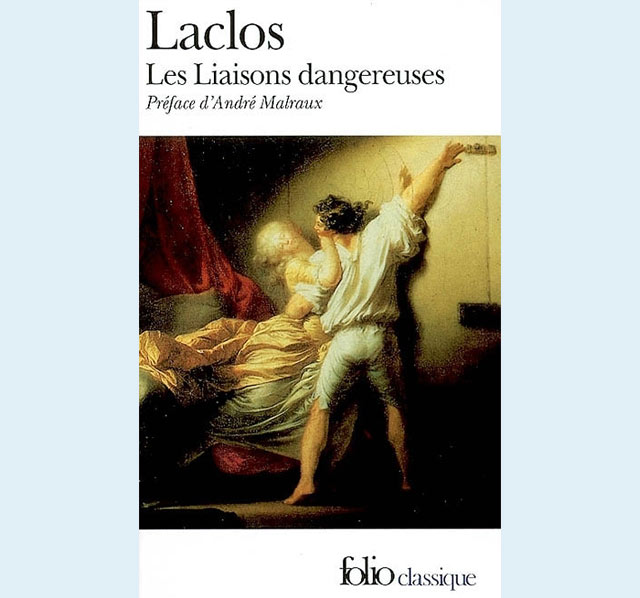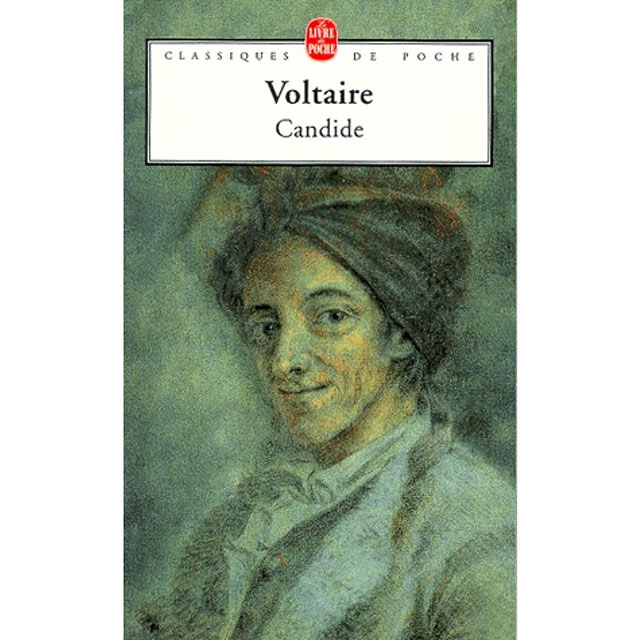There are some classic novels that you either read at school because your teachers made you or because you actually enjoy reading and you read these books at home. Whatever kind of person you are, you should take the time to find at least one or two classic novels to read. There are books for every kind of person: action, drama, love, intrigue, etc. It’s impossible not to find something you’ll enjoy. In order to make this article readable and not 1,000 pages long, we only included 13 french classic novels. If ever you think we forgot a major classic, let us know in the comments below!
French Classic Novels You Must Read
Madame Bovary (Gustave Flaubert)
This book was written in 1856 and was Flaubert’s debut novel. It was attacked and criticised when it first came out and there was even a trial which gave it, even more, publicity and notoriety. It became a bestseller in 1857 and since then, it’s has become part of the classic French books on every best of list. The story takes place in northern France where a second-rate doctor, Charles Bovary, marries an unpleasant woman named Héloïse Dubuc. Charles falls in love with a girl named Emma and marries her after his wife dies. The story tilts towards Emma. She loves luxurious things, high society, and lives beyond her means. She has two affairs behind her husband’s back without his knowledge.
Les Misérables (Victor Hugo)
You’ve probably heard of Les Misérables because of the 2012 movie with Hugh Jackman, Russell Crowe and Anne Hathaway. The book was published in 1862 and is known as one of the best novels of the 19th century. There have been numerous adaptations: a film in 1935, 1952, 1958, 1995 and a few radio and television adaptations. The store chronicles the lives of several characters that in all related in some way. The most central character is Jean Valjean, an ex-convict who turns his life around and becomes a wealthy factory owner but who is still pursued by a policeman named Javert. There are other intertwining stories that allow you to see different sides of each and every character.
Les Fleurs du mal (Charles Baudelaire)
Les Fleurs du mal was published in 1857 and even though it is not a novel but a series of poems, it is still a must-read. This is another novel that was highly criticised. Baudelaire was fined 300 francs for publishing his collection of poems and some of his poems were stilled banned until 1949. There are six sections: Spleen et Idéal (Spleen and Ideal), Tableaux parisiens (Parisian Scenes), le Vin (Wine), Fleurs du mal (Flowers of Evil), Révolte (Revolt), and la Mort (Death). The main themes of these poems is decadence and eroticism. Baudelaire criticises the 19th century modern France and how it creates a sense of anonymity, alienation and estrangement.
Les Liaisons dangereuses (Pierre Choderlos de Laclos)

This epistolary novel is published in four volumes in 1782. An epistolary novel means that the whole book consists of letters written by different characters and it is through the letters that the reader can understand what is going on. The story tells the story of two ex-lovers who become rivals, the Marquise de Merteuil and the Vicomte de Valmont. They both use seduction to control and exploit people. They both enjoy this doing and don’t care that they hurt people while they manipulate them. If you’re interested in the French aristocracy, jealousy, love, lust, passion and the life of the rich before the French revolution, then you’ll enjoy this story. If you’ve ever seen the 1999 movie Cruel Intentions, then you’ll know what this book is all about.
Cyrano de Bergerac (Edmond Rostand)
Cyrano de Bergerac is a play but it is still a must-read. It was written in 1897 and is a fictionalized version of a real man named Cyrano de Bergerac. Cyrano is a cadet in the French army with panache (great confidence in his style) and many talents: He is an excellent poet and musician but because of his large nose, he thinks that no woman (even if she is unattractive) will eve love him. He is in love with her distant cousin, Roxane, who is beautiful and intellectual. Roxane is supposed to be married off to the Viscount Valvert but she is in love with Christian, another cadet in the army. Cyrano writes beautiful letters to Roxane to help Christian since he is in love with her too. This love triangle is a real page-turner!
Les Trois Mousquetaires (Alexandre Dumas)
This historical novel was published in 1844 but is set in the early 17th century. The novel chronicles the adventures of d’Artagnan (loosely based on the captain of the Musketeers of the Guard, Charles de Batz-Castelmore d’Artagnan), a young man who joins the Musketeers of the Guard. He can’t join this elite group but becomes friends with three of the best fighters: Athos, Porthos and Aramis. This novel is historical and full of adventure but you also get to know how the author felt about the monarchy and the Second Republic since he comments on the injustices, abuses and idiocy of the old regime. There are numerous movies, television series, books, children’s books, and video games adaptations that have been made to keep d’Artagnan alive.
Notre-Dame de Paris (Victor Hugo)
If you have kids or you were young during the 90s, you’ve seen the Disney adaptation of this French masterpiece. This story mostly takes place in the Notre-Dame Cathedral in Paris during the Middle Ages. Hugo wrote this book to make people realize the beauty and importance of Gothic architecture. During the 19th century, the French were replacing these old buildings with newer ones. The novel tells the story of a beautiful gypsy named Esmeralda. Many men are infatuated with her, including the Archdeacon Claude Frollo and his guardian Quasimodo. The Archdeacon orders Quasimodo to kidnap her so he can have her to himself but Quasimodo is stopped by Captain Phoebus and Pierre Gringoire. This story has a very glum end but we think Hugo was able to convince all of France to preserve Gothic architecture.
This book regained some visibility in April 2019, after a terrible fire destroyed parts of Notre-Dame de Paris. The day after the tragedy, many people decided to buy the book written by Victor Hugo. A good way to remember the beauty of the Notre-Dame de Paris cathedral and to prove that french classic novels can unite people…
Dom Juan (Molière)
This comedy is one of Molière’s most famous work. Even though this one is also a play, everyone should read this masterpiece. This play was criticised and withdrawn from the theatre because it talked about atheism which was something that was completely dismissed. If the title rings a bell, it is because this play is based on the legend of Dom Juan, a seducer of women who is condemned to go to Hell for his sins and Sganarelle, his greedy, coward, pious and superstitious valet. The story tells the story of Dom Juan, during his last two days on earth after duelling against Dom Carlos. Each act presents his different sins and characteristics. He refuses to repent his sins so Hell and its flames swallow him up.
Le Tour du monde en 80 jours (Jules Verne)
This adventure novel published in 1873 is one of Verne’s most famous and acclaimed novel. This novel tells the adventure of Phileas Fogg, a wealthy British gentleman who doesn’t have a family and his (newly employed) French valet Jean Passepartout who bet against Fogg’s friends at the Reform Clue that they can travel all across the world in 80 days. They go from London to Suez, Bombay to Calcutta, Hong Kong to Yokohama, and San Francisco back to London. Through all the continents and countries, they face numerous exciting and dangerous adventures. Verne was inspired by the technical breakthroughs of the time: the First Transcontinental Railroad in America, the linking of the Indian railways across the sub-continent, and the opening of the Suez Canal.
La Princesse de Clèves (Madame de Lafayette)
This is the oldest book on the list, this novel was published in 1678. Although published anonymously, it is said that the author is Madame de La Fayette. This story takes place during the reign of King Henri II of France. A young heiress, Mademoiselle de Chartres, who’s only 16 years old is brought to the king’s court to find a husband. She marries the Prince de Clèves after all the other (and better suitors) withdraw their offers because of old jealousies. Once she’s married, she falls in love with the Duke of Nemours. The Duke also loves the princess but except from visiting each other a few times, they do not have any other contact. Her husband finds out about her love for the Duke and when he’s on his deathbed he begs her not to marry him. It is known as the first psychological and analysis novel and was widely received.
Candide (Voltaire)

Candide is a novella by the famous French writer, Voltaire. Voltaire was part of the Age of Enlightenment and this novel’s main themes express the thinking of this particular time. Through his fictional work, he discusses the problem of evil, religion, governments, armies, philosophers, etc. in a humorous way. Because of this, the book was banned and created a huge scandal in the literary world. Candide, a young man living in an Edenic Paradise, being taught Leibnizian optimism by his mentor. After he experiences hardship and his current lifestyle ends, he rejects Leibnizian optimism completely.
Le Père Goriot (Honoré de Balzac)
This 1835 novel tells the story of three connected characters: Goriot (an elderly retired man), Vautrin (a criminal hiding), and Eugène de Rastignac (a law student). After the fall of Napoleon, the Bourbon Restoration regime turned France into a constitutional monarchy so it had limited power. This novel chronicles the story of these three men who meet while living in a boarding house in Paris. The law student wants to climb the social ladder so he learns how to talk and act like the upper class with the help of his cousin. He becomes infatuated with Goriot’s daughter but Vautrin convinces him to pursue another woman. Balzac is very descriptive which makes this a realist novel.
Le Rouge et le Noir (Stendhal)
This historical novel was published in 1830 and is another novel about climbing the social ladder in French society during the Bourbon Restoration regime. Le Rouge et le Noir refers to the tension between the clergy and the secular. A young, ambitious and intelligent man named Julien Sorel wants to move up in society and dissociate himself from his poor background. He is fascinated with Napoleon Bonaparte who was just exiled and wishes to ascend like he did. There were numerous film and mini-series adaptations and the book was even ordered to be burned during the 1964 coup d’état in Brazil.
What are your favorite French classic novels? Or do you prefer reading graphic novels?











